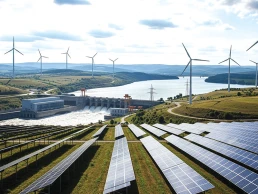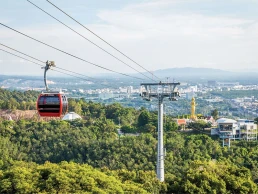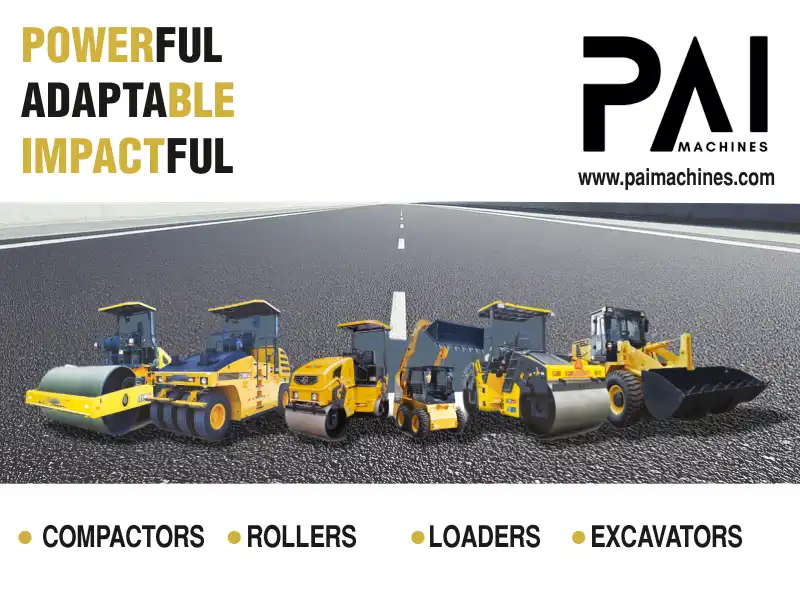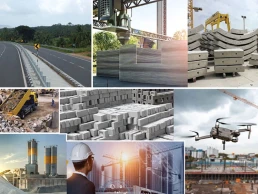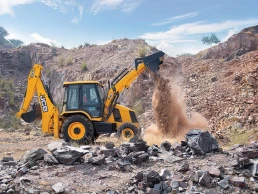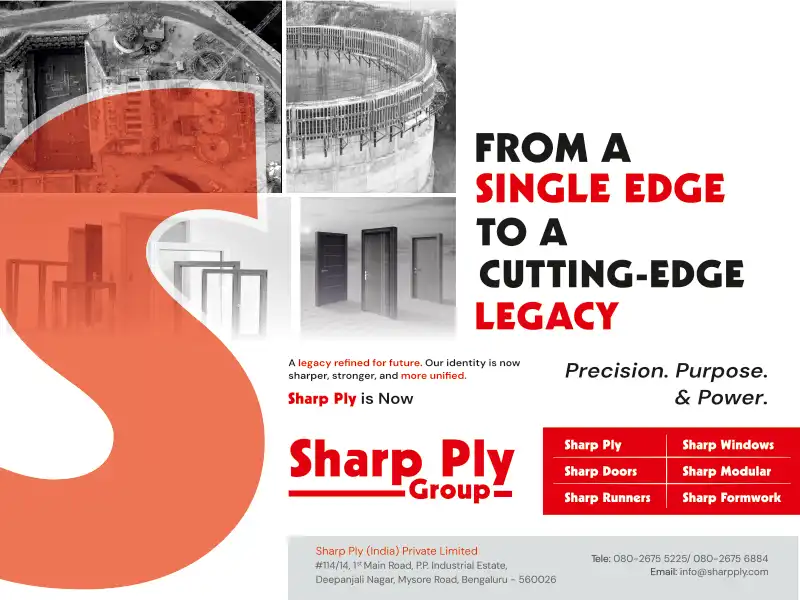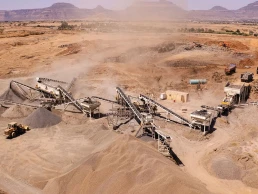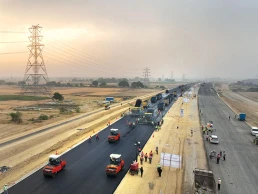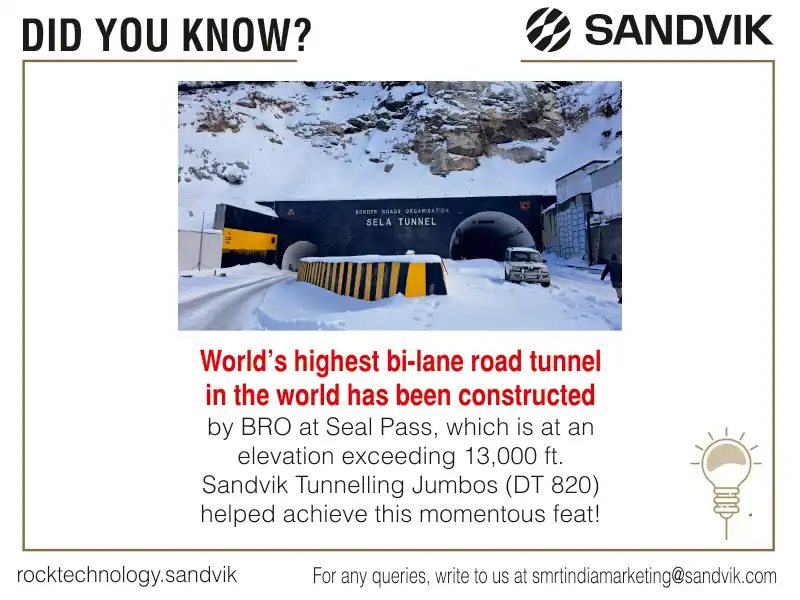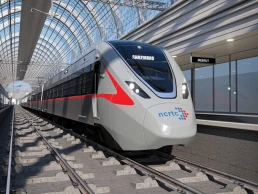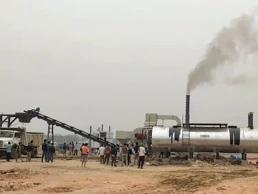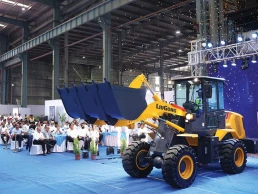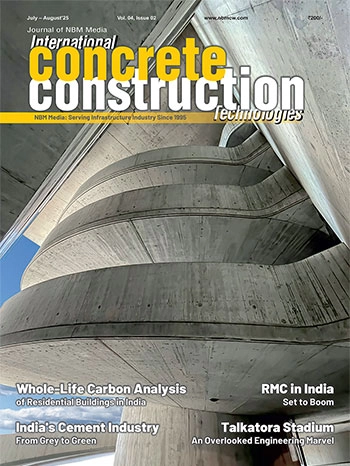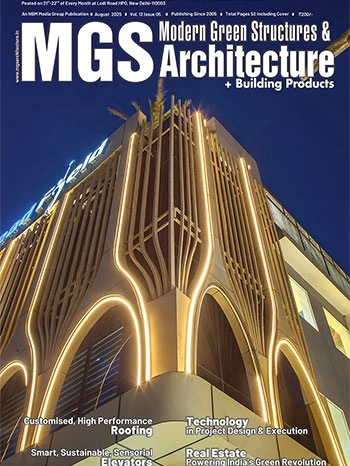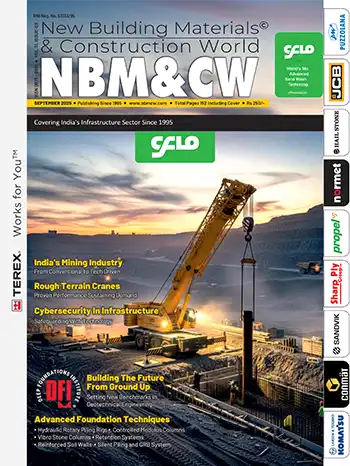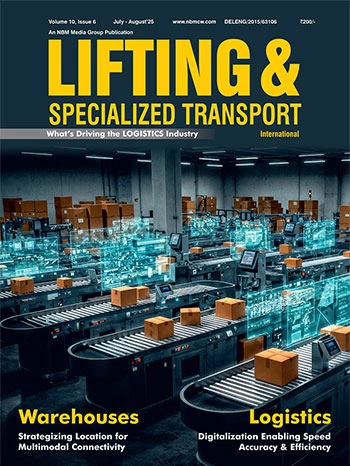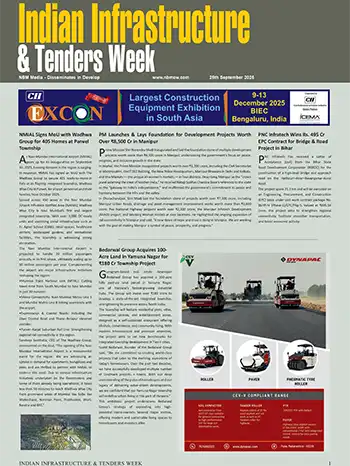CREDAI's Smart Construction Manifesto for a Future-Ready Real Estate

In an exclusive interview by Vinod Behl, Confederation of Real Estate Developers Associations of India (CREDAI) President, Shekhar Patel, unveils the strategic agenda of the apex body of real estate developers under his leadership, spelling out key initiatives planned to overcome various challenges for creating a future-ready, sustainable real estate and to benefit various stakeholders, including developers and homebuyers, with a larger aim to not just boost real estate growth but also to strengthen Indian economy towards achieving the goal of Viksit Bharat by 2047.
With the real estate market projected to reach USD 1 trillion by 2030 and contribute 15% to India’s GDP, what key priorities and initiatives will you focus on as CREDAI President to drive growth and address challenges like high construction costs, land scarcity, regulatory delays, and affordability?
The Indian real estate sector stands at a pivotal juncture—poised for transformation but also grappling with long-standing structural challenges. As the President of CREDAI, my vision is clear: to create a future-ready, inclusive, and resilient real estate ecosystem that supports developers, empowers homebuyers, and drives national growth.
To achieve this, I have identified five strategic priorities that will define CREDAI’s national agenda over the next two years. For strengthening affordable and inclusive housing, we are in active dialogue with the central government for creating a more dynamic and region-specific benchmark as the size limit and price cap of INR 45 lakhs in most Tier 1 and Tier 2 cities is unviable for making affordable housing more viable for developers. For making it more attractive, we are pushing for subvention schemes for first-time homebuyers and extension of Section 80IBA benefits to developers.
Our agenda also includes improving ease of doing business. As delays in project approvals increase construction costs and related risk, CREDAI is advocating for a national-level digital single-window system that integrates RERA, environment, municipal and state-level approvals. While lending support to digitize land records and approvals, we are helping state governments build efficient and transparent systems.
As part of our agenda towards skilling and capacity building, we are upskilling construction workers, with the aim to train one lakh workers annually in safe, mechanized and sustainable construction practices. We are also launching CREDAI Learning Academies across major cities to equip developers, project managers, and engineers with the latest knowledge in project finance, RERA compliance, ESG standards, and modern construction systems.

One of our key agendas is to strengthen financing and capital access. We are working with RBI, SEBI and NHB to open new financing avenues like REITs for residential, green bonds, blended finance, and long-tenure institutional debt as future-ready financing models for the real estate sector. In our move to support MSME developers, we are creating platforms to connect them with NBFCs, HFCs, and alternate funding sources.
As part of the CREDAI Green India Mission to promote green construction and sustainability, we have launched a large-scale reforestation programme, starting with 9000 acres in Nashik, with a plan to scale it across multiple states. This is complemented by promoting green construction materials, solar integration, and energy-efficient buildings. We are also advocating for fast-track approvals and lower premiums for IGBC/ GRIHA-certified buildings to encourage sustainable development.
In short, my priorities revolve around reforming policy, empowering the developer community, ensuring faster approvals, boosting housing supply, and promoting sustainability. We are working closely with all the stakeholders: central and state governments, financial institutions, and RERA authorities to make real estate a key pillar of India’s Viksit Bharat 2047 vision, through collaborative efforts and bold reforms.
Through collective leadership, innovation, skilling, and advocacy, CREDAI's vision is to build an industry that is professional, mechanized, compliant, sustainable, and inclusive. We aim to position India’s real estate as a global benchmark by 2030, and as a key driver of India’s economic and climate goals for 2047.
In the light of regulatory reforms like RERA and GST, how is CREDAI helping developers professionalize, ensure compliance, and maintain business continuity, while also safeguarding homebuyers’ interests and advocating for industry-friendly policies?
The implementation of RERA and GST has been transformative for the Indian real estate sector. It has ushered in a new era of transparency, accountability, and tax compliance but it has also increased the burden of compliance for developers, especially small and mid-sized ones. At CREDAI, we see this not as a challenge but as an opportunity to professionalize and uplift the entire sector through multi-dimensional interventions. Here is how CREDAI is addressing this multi-dimensional task:
For building awareness and enabling compliance, CREDAI has set up dedicated help desks across state chapters to assist developers in understanding and complying with RERA provisions and GST norms. These help desks serve as handholding mechanisms for members, especially in smaller towns. Regular legal and taxation workshops are conducted in collaboration with top legal experts and GST consultants to keep developers updated on changing regulations, judicial interpretations, and compliance best practices. CREDAI has developed model documents for sale agreements, allotment letters, and RERA disclosures to ensure consistency and safeguard both developers and consumers.
To promote professionalism among the developer community, training and certification programmes are being conducted in partnership with institutions like ISB and RICS in the areas of project management, financial planning, ESG compliance, RERA regulations, customer service. Further, CREDAI Code of Conduct is promoting ethical practices, project transparency, and grievance redressal of homebuyers. To help our developer members, we are strengthening our national CREDAI App, which will allow them to track project approvals, stay updated on regulatory changes and access compliance resources easily.
CREDAI is already encouraging members to adopt ERP and compliance software that streamline GST filings, RERA updates and project accounting. We are actively representing developers' interests in key forums like MoHUA, Ministry of Finance and GST Council, advocating for rational GST rates on under-construction homes, input tax credit restoration, uniform and simplified RERA framework across states, reducing duplication of approvals, providing clarity on ongoing project definitions, and introducing timelines for authority responses.
Our efforts to enforce discipline among member developers by blacklisting defaulting members and disputes resolution through conciliation forums have helped restore homebuyers’ confidence. We are also preparing to launch a CREDAI-backed rating system for member projects based on delivery track record, legal clearances and customer satisfaction, empowering buyers to make informed decisions.
In essence, CREDAI is playing a dual role as a reform enabler and as an industry protector. We are helping developers transition smoothly into a compliant and professional environment, while simultaneously ensuring that homebuyers benefit from better transparency, timely delivery, and higher accountability.
Advanced mechanization and modern construction systems are necessities for the real estate sector to evolve into a future-ready and globally competitive industry, especially as modern construction methods and mechanization ensure speed, efficiency, safety, quality, precision, and sustainability.
With increasing pressure to complete projects on time, how can advanced mechanization (such as foundation equipment, material handling, cranes, concrete equipment and placing etc.) and the use of modern construction systems such as tunnel formwork, advanced scaffolding, precast, pre-engineered solutions help improve speed, safety, and quality? What role is CREDAI playing in encouraging their wider adoption across the industry?
Timely project delivery has become non-negotiable in the post-RERA era. With stricter regulatory frameworks, higher customer expectations, and tighter financial cycles, the need for speed, safety, and consistency in construction is more critical than ever. Advanced mechanization and modern construction systems are no longer luxuries—they are necessities for the real estate sector to evolve into a future-ready and globally competitive industry. Especially as modern construction methods and mechanization ensure speed and efficiency, safety, quality, precision, and sustainability.
As a national body representing over 15,000 developers, CREDAI is taking proactive steps to promote wider industry adoption of these technologies. We are organizing construction technology showcases across major cities, where global OEMs and system providers demonstrate solutions like precast, tunnel formwork, 3D printing, and modular housing. At our NATCON and YouthCon events we dedicate entire sessions to live case studies of developers who have achieved 30–40% faster execution through mechanization.
CREDAI is in active discussion with construction equipment manufacturers, scaffolders, and modular building providers to offer affordable leasing models and financing support for member developers. MoUs are being considered with leading institutions like IITs and CPWD to jointly test and validate emerging technologies under Indian conditions.
CREDAI chapters are supporting pilot projects where developers can implement precast or PEB solutions in collaboration with tech partners and showcase success models to peers. A few CREDAI members have already delivered affordable housing projects using full precast and monolithic systems, cutting timelines by 30–50%.

As part of regulatory advocacy, we are urging state governments and urban local bodies to provide FAR/FSI incentives and fast-track approvals for projects using green and industrialized construction technologies. CREDAI is also calling for updation of standardization and certification frameworks to include and validate these modern methods. The future of real estate in India must be industrialized, digitized, and mechanized. Mechanization is not just about speed—it’s about precision, predictability, productivity, and people safety. We are committed to driving this transition through a combination of knowledge dissemination, strategic partnerships, skilling programmes, policy advocacy. and developer collaboration. We believe that the next generation of developers must be as fluent in technology and mechanization as they are in land and finance. That’s the only way to make India’s real estate sector truly global in quality and competitive in cost.
We are launching CREDAI Learning Academies across major cities to equip developers, project managers, and engineers with the latest knowledge in project finance, RERA compliance, ESG standards, and modern construction systems.
How do you see the potential of emerging construction technologies like 3D printing and monolithic construction in transforming real estate development in India? Is CREDAI partnering with equipment manufacturers or tech providers to showcase benefits of these technologies in term of speed, productivity, and quality to its members?
India’s urbanization goals demand a construction ecosystem that is faster, smarter, and greener, wherein emerging construction technologies like 3D printing, monolithic casting, and modular prefabrication, hold tremendous promise in revolutionizing how we build homes, offices, and cities. At the same time, the shift toward low-carbon, energy-efficient building materials is essential for ensuring that this growth is sustainable. CREDAI is fully committed to leading the transformation on both fronts.
We see 3D printing as a game-changer in low-rise housing, especially for affordable housing, disaster relief shelters, and military housing. The ability to build walls and structures layer-by-layer with minimal waste and human intervention has significant implications for speed and scalability. In monolithic construction, techniques like aluminium formwork (Mivan) and tunnel form enable single-pour casting of entire floor slabs and walls, dramatically reducing construction time from 18–24 months to under 12 months in many projects. It ensures better finish, waterproofing, and structural consistency.
We are actively partnering with construction tech firms, formwork solution providers, and 3D printing startups to demonstrate these technologies to our members across India. CREDAI is encouraging members to launch pilot projects using monolithic and 3D printed solutions. Some early adopters in South India have already achieved successful outcomes in affordable housing. In collaboration with vendors, we are organizing live demo sessions, knowledge series, and lab visits to showcase cost-benefit, structural performance, and ease of use. We are also exploring international collaborations to bring best practices from countries like Singapore, UAE, and the Netherlands, where 3D printing and monolithic systems are widely adopted.
At CREDAI, we believe that the future of construction in India must be both tech-driven and climate-conscious. By promoting 3D printing, monolithic systems, and sustainable materials, we are not only improving project efficiency but also creating a positive environmental legacy. Our goal is to mainstream these innovations to ensure that even Tier 2 and Tier 3 city developers adopt them, and make Indian real estate globally benchmarked in speed, safety, quality, and sustainability.

What steps are being taken by CREDAI to promote and encourage the adoption of eco-friendly, energy-efficient, and low-carbon building materials such as fly ash bricks, GGBS-based cement, and recycled aggregates in mainstream construction?
Recognising the need for sustainable materials, CREDAI is promoting eco-friendly, energy-efficient building materials. Traditional construction practices are resource-intensive and carbon-heavy. The use of fly ash bricks, GGBS-based cement, recycled aggregates, and AAC blocks is not just an environmental imperative, but also a long-term cost saver. We are drafting sector-specific guidelines to encourage member developers to shift toward low-carbon, non-toxic, and energy-saving materials.
To promote supply chain partnerships, we are engaging with manufacturers of fly ash bricks, GGBS cement, recycled sand, and construction waste recyclers to ensure availability, affordability, and quality assurance for CREDAI members. We are advocating adoption through FSI/TDR incentives and premium rebates from local authorities for green-certified buildings, and proposing fast-track approvals for projects using certified green materials.
For promoting awareness and training through CREDAI Youth and Women’s wings, we are hosting site seminars and case studies on sustainable construction. In collaboration with IGBC, GRIHA, and other green rating agencies, we are offering workshops to educate developers on environmental compliance and material choices.
CREDAI is aligning these efforts with India’s climate goals under COP28, the MoHUA’s Green Urban Mobility Plan, and the National Mission on Sustainable Habitat. We are also preparing to support mandatory ESG disclosures and green financing criteria that are likely to be enforced by financial regulators and lenders in the near future.
We believe that the future of construction in India must be both tech-driven and climate-conscious. Our goal is to mainstream innovations like 3D printing, monolithic systems, and sustainable materials, even in Tier 2&3 cities, and make Indian real estate globally benchmarked in speed, safety, quality, and sustainability. In fact, we are targeting 50% of construction sites in these cities to adopt mechanized workflows by 2030.
What are CREDAI’s views on construction and demolition (C&D) waste management? Is there an industry-level roadmap for promoting recycling and waste minimization? How can developers under CREDAI’s umbrella work collectively to reduce their carbon footprint and greenhouse gas emissions?
C&D waste is one of the largest contributors to urban landfills, and as the real estate sector grows, this challenge will only intensify. CREDAI is committed to becoming part of the solution by taking several key initiatives.
As part of C&D Waste Management Roadmap initiative, we are working on a pan-India framework that promotes onsite segregation and storage of waste. We are tying up with municipal authorities and private recyclers for use of recycled aggregates, sand, and debris in non-structural applications. As part of our initiative, we are seeking developer collaboration by encouraging CREDAI chapters to set up R&D collection and storing centres through PPP models, especially in urbanizing clusters.
With regard to regulatory engagement, CREDAI is urging local bodies to provide incentives for certified waste reuse, mandate use of 20-30% recycled content in applicable works. For carbon reduction, we are promoting the use of low-carbon materials like GGBS, fly ash bricks, energy-efficient appliances, passive design elements and solar integration in rooftops and common areas.
What initiatives are being taken to upskill site engineers, project managers, and workers, especially in handling modern equipment, ensuring safety, improving quality, and applying sustainable construction techniques?
Skilling is the backbone of every reform we envision. Our goal is to empower the 5 crore+ workforce associated with construction through structured, scalable, and future-ready programmes. Through the CREDAI Skill India programme, we are training over one lakh workers annually in trades such as masonry, bar bending, plumbing, electrical, and safety.

We are working on technology-focused upskilling. There are specialized modules for handling tunnel formwork, precast elements, modern scaffolding and concreting equipment. We have onsite skilling units with real equipment in partnership with OEMs. Project Manager and Engineer training, courses on quality control, ESG compliance, digital tools (BIM, ERP) and safety systems, are all part of our skilling initiative.
We have begun training workers in handling bar bending machines, concrete pumps, tunnel form shuttering systems, robotic masonry, and plastering tools. We are working with the National Skill Development Corporation (NSDC) and international skilling agencies to enhance curriculum and certification.
We are collaborating with IITs, NICMAR, RICS and global agencies and have onsite certification programmes with practical multilingual modules with third-party certification to ensure employability and credibility.
We believe that the next generation of developers must be as fluent in technology and mechanization as they are in land and finance. That’s the only way to make India’s real estate sector truly global in quality and competitive in cost.
How does CREDAI plan to build long-term capacity among developers and contractors for adopting new technologies, sustainable practices, and compliance frameworks?
CREDAI is moving from skill development to industry-wide capacity building by institutionalizing knowledge, mentorship, and innovation. Through CREDAI Learning Academies, regional centres offer ongoing learning for developers, contractors, and technical teams. Developer-to-Developer Mentorship facilitates structured knowledge exchange between large developers and regional firms to help them adopt modern systems and compliance processes.
As part of tech pilots and case studies, successful use cases of precast, 3D printing, or sustainable design are published to de-risk innovation. Through digital adoption support, use of BIM, ERP systems, drone mapping and AI tools in construction workflows is promoted. The local teams at compliance assistance cells help developers navigate evolving regulations- RERA, EPR, ESG, Labour Law etc.
As the industry moves towards sustainability and innovation, what is CREDAI's long-term vision for creating a future-ready, tech-enabled real estate ecosystem? Can we expect a national roadmap or ‘Smart Construction Manifesto’ outlining goals for mechanization, zero-emission green construction, and digital transformation?

CREDAI is working on a “Smart Construction Manifesto”, which will act as a national vision document for the sector’s transformation over the next decade. Under this, 50% of construction sites in Tier 1 and Tier 2 cities will be targeted to adopt mechanised workflows by 2030.
With regard to green construction goals, it envisages net-zero emissions in all CREDAI member head offices by 2027 and at least 25% of new projects are to be IGBC/GRIHA-certified by 2030.
Focusing on digital transformation, the manifesto outlines that 70% of CREDAI members should be using ERP, BIM or digital project management tools. Digital RERA and approval tracking is to be integrated with the CREDAI app. The manifesto also includes circular construction practices. It talks of mandatory waste reuse norms and use of certified recycled materials. The manifesto will serve as a common charter for CREDAI's 230 city chapters and 20 state bodies.
For the capital-intensive real estate/construction sector, there is an urgent need to build a sustainable financing ecosystem in order to realize the full potential of the sector. What, according to you, needs to be done for future-proofing real estate financing and what role is CREDAI playing in this regard?
Financing is the oxygen of real estate. To build a resilient and future-ready financing ecosystem, CREDAI is pushing for deep structural changes and financial innovation. Our priorities in this regard include institutional capital access, encouraging REITs and InvITs in residential and rental housing, introducing real estate infrastructure funds for long-tenure capital with backing from insurance and pension funds.
For green financing, our priorities include promoting green bonds with tax incentives for developers who commit to sustainable design and construction. Working with credit rating agencies to assign ESG-linked ratings to projects, support to MSME developers, launching CREDAI FinConnect platform to match smaller developers with NBFCs, HFCs and engaging with SIDBI and NABARD to fund real estate -linked infrastructure in semi-urban areas are our other priorities.
As part of policy advocacy, we are urging regulators to extend CLSS-type subsidies to rental and Tier 2-3 markets and allow greater bank exposure for real estate under prudent norms.
CREDAI's vision is to build an industry that is professional, mechanized, compliant, sustainable, and inclusive. Through collective leadership, innovation, skilling, and advocacy, we aim to position Indian real estate as a global benchmark by 2030—and as a key driver of India’s economic and climate goals for 2047.

































